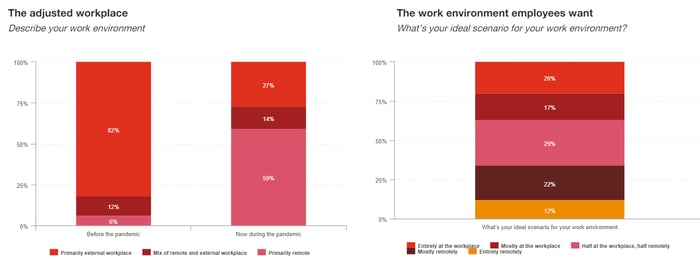
Fare thee well, 2020!
Last year was one of agility in the face of unprecedented change. Within that transformation arose several factors influencing business operations and life in general, which have now been incorporated into daily living. New ways of functioning both professionally and personally have overtaken the traditional methods globally and are being carried into 2021. With the resumption of face-to-face meetings and other social interactions, we will have to become mindful of certain human behaviors as simple as shaking hands or even close-quartered connections. Our society has adapted to new behaviors and habits. One of the changes most organizations face is the migration of staff to full-time or partial remote work situations.
Hybrid Ahoy?
Before 2020, some organizations were on board the work-a-day-from-home plan, while others were reluctant to join that movement. Nevertheless, a massive shift occurred, which drove a significant percentage of the working populace, about 4.2 million Canadians, to restructure their lives around the new work-from-home model. Of course, as with all things, there are reactions from both sides of the divide. Some prefer this new order that offers flexible work hours. It gives them the capacity to spend more time with family, take care of their responsibilities, and enjoy perks they wouldn’t have if working at the office. On the other hand, others mourn the old way of working. They miss having the appropriate work setup, being away from personal life distractions, and following a more structured work routine that grants them the freedom to leave work at the end of the day. Despite the opposing views, productivity seems to be on the rise.

PwC Canada – Canadian workforce of the future survey
New Year, Old Habits?
As we enter 2021, will the reality that businesses may have to embrace a half-and-half hybrid of remote and office work based either on overall employee preference or corporate needs? The adjustment to a hybrid variety will come with lifestyle adaptations that most of us must take into consideration. Even with the reported increase in productivity, will the combined effect of holidays and colder temperatures cause a dip or plateau in output? To avoid “remote work fatigue,” here are some tips that should keep your productivity up while you work out of home.
Kick the post-holiday blues- A simple but effective way to beat the post-holiday blues is to get back into a regular pre-holiday routine. This includes bedtimes, mealtimes, work time, and fun times.
- Plan to attend a professional or personal event, even if it is virtual. The anticipation of a future event will make time pass more quickly.
- Map out the activities of your day. A well-laid-out plan is one that’s easy to follow. Prioritize your tasks, then knock them out one after the other.
- Working remotely might make you want to do both office work and home chores during your paid hours. Working at the office often meant commuting and moving around the office for various reasons. Remote work has taken away that movement, but it offers the flexibility to align breaks with chores, such as taking the dog out for a walk at lunch or putting clothes in the laundry during a short 15-minute break.
- Timed breaks add some excitement to the humdrum of the day. Several techniques are available online that will fast-track accomplishing tasks thanks to the expectation of timely intervals.
- It’s easier to spend more time on mobile phones when working from home. Social breaks are needed to stay focused on completing daily targets. Make your work area a no-phone zone. This means disconnecting from all social channels but still being able to place and receive calls for business or in case of emergency.
As the new year begins in much the same way the old one ended, how are you boosting motivation and productivity, regardless of your location? Share with us in the comments! We look forward to what’s in store for 2021.





